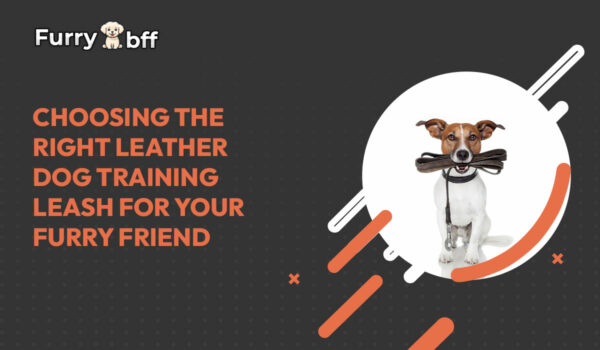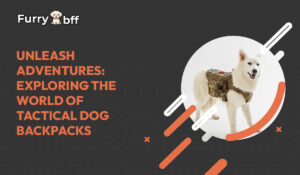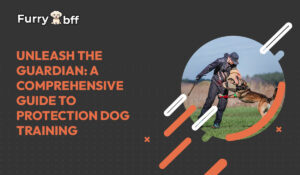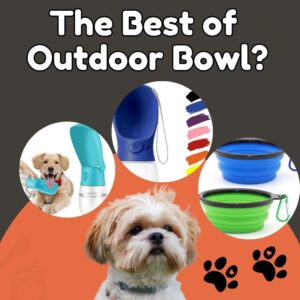When training your dog, one crucial factor is ensuring they have the gear. Choosing the training leash for your friend is essential for achieving the desired results. Leather dog training leashes are popular due to their durability and high-quality construction. However, with many options available, knowing how to select the leather leash for your pup is essential. In this article, we’ll provide you with tips to help you make a decision.
Consider the Length
The leash length is a factor when choosing one for your dog. The appropriate length depends on your dog’s size, training requirements, walking environment, and personal preferences. Here are some guidelines that can assist you in selecting the right leash length;
Standard Length:
Typically, a standard leash measures around 6 feet (1.8 meters). This length offers a balance between giving your dog freedom to move around while maintaining control.
Dog Size:
A longer leash might be beneficial for dogs as it allows them to explore while still being under control.
When it comes to dogs, using a leash can be beneficial. It helps prevent any tangling and allows for control.
Training Goals
Let’s talk about some training goals. A shorter leash can offer control if you’re working on obedience training or teaching your dog leash manners. Enhance communication between you and your furry friend.
Consider the environment in which you’ll be walking your dog. Opting for a shorter leash can be more practical as it helps avoid entanglement with pedestrians or obstacles. On the other hand, if you’re in parks or trails, a longer leash gives your dog more freedom to roam around.
If your dog tends to pull while walking, using a leash can make it easier for you to maintain control and prevent lunges that could lead to accidents.
Speaking of safety in areas with traffic, keeping your dog close to you by using a leash is important as it reduces the risk of accidents.
For dogs still learning to recall commands, using a leash allows them some freedom while ensuring they remain under your control.
Lastly, don’t forget about considering your comfort during walks. While a longer leash may give you freedom of movement, opting for one can provide an enhanced sense of control over your canine companion.
Remember these factors when choosing the length of the leash during dog walks.
Some leashes come with attachment points, which can be adjusted to different lengths depending on the situation. This feature proves to be quite helpful for training purposes and offers versatility.
It’s essential to be aware of any regulations concerning leash length in your area, as specific space requirements might exist. It’s always an idea to strike a balance between your dog’s needs, your training goals, the environment you’re in, and your comfort when determining the leash length. If you’re unsure where to start, going with a 6-foot leash is generally a choice, and you can make adjustments from there based on your experiences and your dog’s behavior. Remember that prioritizing safety, control, and the well-being of yourself and your dog should guide your decision-making process.
Factors to Consider
Another factor worth considering when selecting the leash for your friend is its width. The width of the leash plays a role in controlling your dog, ensuring comfort during walks or other activities and overall safety. Here are some critical points regarding leash width that you should keep in mind;
1. Dogs Size and Strength;
Make sure that the leash’s width matches your dog’s size and strength.
Larger dogs and those with strength may benefit from using leashes to ensure you have sufficient control over them.
2. Comfort and Grip;
A leash can offer comfort, especially if you have a solid or active dog. It provides a grip, reducing any discomfort or strain on your hand during walks.
3. Control;
A leash can provide control, mainly if your dog tends to pull or gets easily excited. It gives you leverage to manage your dog’s movements effectively.
4. Small Dogs;
Smaller dogs typically don’t require a leash since their size makes them easier to handle. However, it’s still essential to choose a leash that can hold their movements.
5. Durability;
Wider leashes often feature materials and stitching, contributing to their lasting nature and ability to withstand regular wear and tear.
6. Training;
The width of the leash can influence your training methods. A broader leash might offer space for corrections and cues during training sessions.
7. Multiple Dogs;
If you are walking dogs using the leash, opting for a wider one can grant you better control while minimizing tangling between the dogs.
8. Activities;
Consider the activities you plan on doing with your dog in mind. When you go jogging or hiking, using a wider leash can give you control and make your movements more comfortable. It’s not about functionality, though – some people prefer leashes because they look more stylish and substantial. Additionally, wider leashes often come with sturdier attachment hardware, ensuring a connection to your dog collar or harness; in general, choosing a width that matches your dog’s size, strength, and personal comfort is essential. If you have a strong dog, opting for a wider leash can give you better control and ease of use. However, a narrower leash might be sufficient if you have a more relaxed dog. Ultimately, finding the right balance between width and functionality will contribute to walks and activities with your friend.
Buckle Up
When it comes to the buckle or clasp on your dog’s collar or harness, it’s crucial to consider the type as it affects both the ease of use and the security of the accessory. There are types of buckles. Clasps available each, with its advantages and considerations.
Here are a few common styles of buckles. Clasps that you’ll find in dog accessories;
1. Side Release Buckle;
Side-release buckles are widely used in dog collars and harnesses. They’re designed for one operation, providing a quick and secure fastening. These buckles comprise two pieces that snap together and release when you squeeze the sides.
2. Quick Release Buckle;
Similar to side-release buckles, quick-release buckles offer convenience with their one operation. They work well for collars and harnesses, making it easy to put on or remove them.
3. Martingale or Limited Slip Buckle;
Martingale collars often feature a limited slip buckle, offering a fit without the buckle mechanism. These collars are designed to tighten when your dog pulls, preventing them from slipping out without tightening.
4. Buckle Material;
Regardless of the buckle type you choose, it’s essential to ensure that it is made of durable material of withstanding your dog’s movements. Quality plastic or metal buckles are considered options.
5. Metal Snap Hook;
You might come across metal hooks used for purposes in some harnesses and leashes. These hooks can. Be spring-loaded or screw-type.
These variations in buckle styles allow pet owners to find the fit, for their friends while ensuring comfort and security during walks or other activities.
Here are some key factors to consider when selecting a dog harness;
1. Size and Strength of the Buckle:
Ensure the buckle or clasp matches your dog’s size and behavior. For more muscular dogs, choosing a robust hook is essential to prevent any breakage.
2. Ease of Use:
Select a buckle that’s easy to open and close, especially if you have an impatient dog.
3. Durability and Reliability:
Ensure the buckle can withstand use, pressure, and tugging without breaking or becoming loose.
4. Accessibility:
If you have any limitations or need to handle dogs simultaneously, consider how accessible and easy it is for you to manipulate the buckle.
5. Safety Features:
Look for buckles with safety features like locking mechanisms that prevent release. These features are essential for dogs to escape or when security is crucial.
6. Harness Chest Clip:
When choosing a harness, pay attention to the chest clip. It should be secure, easy to fasten, and simple to release, promoting comfort and safety for your dog.
When deciding on the type of buckle or clasp, it’s essential to consider both your dog’s needs and your convenience. The proper buckle will ensure your dog’s collar, harness, or leash stays secure, giving you peace of mind during walks and other activities.
The Quality of the Leather
The quality of the leather used in a dog leash, collar, or any other accessory is a factor that directly affects its durability, comfort, and overall performance. Opting for high-quality leather ensures that the accessory remains functional and visually appealing. Here are some key points to consider when assessing the leather quality used in dog accessories;
1. Type of Leather
Full Grain Leather: This is considered the quality and durable type of leather. It retains the grain and texture of the hide, making it strong and resistant to wear and tear.
Top Grain Leather: lower in quality than full-grain leather but solid and durable. It is often more affordable and has a surface.
Genuine Leather: Despite its name sounding like a high-quality term, “genuine leather” can refer to various types of leather available.1. It is often used for products at prices. It may not be as long-lasting as complete or top-grain leather.
2. Texture and Appearance
High-quality leather will have a texture, showcasing marks and variations contributing to its unique character. On the other hand, low-quality leather might exhibit a uniform appearance, giving it a plastic-like look.
3. Flexibility and Suppleness;
Good quality leather is both flexible and supple when brand new. It should feel comfortable in your hands. When used for dog accessories.
4. Thickness and Strength;
Quality leather is thick and robust enough to withstand the stresses and tugging commonly associated with dog accessories.
5. Stitching and Seams
crafted seams with reinforced stitching points demonstrate attention to detail and indicate high construction quality.
6. Tanning Process
Using top-notch methods, leather that has undergone tanning will offer resistance against water, sunlight, and regular wear.
7. Odor
High-quality leather should have a pleasant scent characteristic of leather. Strong chemical or synthetic odors can be signs of inferior quality leather.
8. Color Consistency
The color of the leather used in the accessory should be uniform throughout without any variations in shade or tone. Uneven coloration may suggest quality or subpar dyeing techniques.
9. Longevity
When you invest in high-quality leather, it ages and develops a patina over time. It remains resistant to cracking, peeling, and brittleness.
Manufacturer Reputation
Before purchasing leather goods, it’s essential to research the manufacturer’s or brand’s reputation. Reviews and recommendations can provide insights into the quality of their products.
Country of Origin
Leather from countries known for their expertise in the leather industry may have quality standards.
Care Instructions
A trustworthy manufacturer will always provide care instructions to ensure your leather accessory lasts long. By choosing high-quality leather for your dog’s accessories, such as leashes, collars, or harnesses, you ensure they look great and withstand wear and tear. Prioritizing quality leather contributes to your safety and comfort as your furry friend’s.
The Handle
The handle plays a role in your experience during walks or activities with your dog. It directly impacts your comfort, control, and enjoyment. Considering these factors when evaluating a dog leash handle is essential.
Material: When choosing a handle, it’s important to consider its material for your leash. You want something that’s both comfortable and durable without causing any irritation. Standard options include leather, nylon, neoprene, and padded fabric.
Padding and Comfort: Another factor to consider is padding and comfort. A handle with padding can significantly enhance your comfort during longer walks or when your dog tends to pull. It helps reduce strain on your hand and provides a grip.
The design of the grip is also crucial. It should be ergonomic, allowing you to hold it comfortably without experiencing any discomfort or blisters. Different handle shapes, like loop handles or ergonomic curves, cater to having preferences.
Thickness: In terms of width and thickness, a wider handle can distribute pressure evenly across your hand, reducing strain. However, it should still fit comfortably in your hand for control.
It’s essential to pay attention to stitching and seams well. Stitched and reinforced seams indicate quality craftsmanship and durability. On the other hand, poor stitching can lead to wear and tear.
Don’t forget about the hardware that connects the handle to the leash. Make sure it’s sturdy and securely attached for use.
Consider the length of the handle well. It should allow you to hold it comfortably while controlling your dog’s movements. Lastly, some leashes offer handles that can be extended or shortened based on your preferences and needs.
Reflective Features: If you often walk in light conditions, it’s an idea to choose a handle that has reflective stitching or accents. This will provide added visibility. Make you more noticeable.
Lining: Some handles come with a lining, like neoprene or fleece, which adds to your comfort and helps prevent any chafing that may occur.
Easy to Clean: Ensure the handle’s material is easy to clean in case it gets dirty or wet during your walks. This will help maintain its cleanliness and durability.
Safety Loop: Specific handles have a safety loop you can slip your hand through for security. This is especially useful if you find yourself in areas with many distractions or traffic.
Attachment Point: If you need to attach items such as waste bags, look for a handle with a built-in attachment point or loop for convenience.
A designed handle improves your grip, reduces strain on your hand, and allows you to control your dog during walks and activities effectively. It’s essential to consider both your comfort and your dog’s behavior when choosing a leash with the right handle design. Remember, the handle plays a role in ensuring your and your dog’s safety while walking or engaging in activities.
Conclusion
Selecting the leather dog training leash is crucial for success during training sessions.
When choosing a dog training leash, it’s essential to consider its length and width, the leather quality, the buckle, and the handle. Considering these aspects, you can ensure that you and your furry friend have a practical and fulfilling training experience. Investing in a high-quality leather leash is advisable to guarantee its durability over time. Selecting a leash that meets your training requirements will undoubtedly result in a trained and contented dog.









